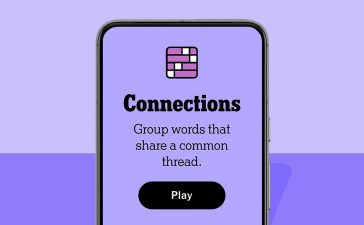At this point, Apple offers its users services to make purchases, transact sales, buy items on credit using a card, save money, a virtual currency, and to make small transactions over time at zero interest rates. It takes a tiny cut of cash from all these transactions. But even now the Apple Pay story is still just beginning.
No one likes banks
Think back to the financial crash, when an out-of-control banking sector set in motion a chain of events that left many people today poorer than they were and it’s not hard to figure out why tech firms are finding it easy to chomp away at the core banking business. No one likes the banks any more.
That’s why Apple’s financial services moves matter. The company is developing an entire ecosystem of financial products for its platforms, building average revenue per user, stimulating platform loyalty, and replacing retail banks.
The reach of the company’s fintech services continues to grow. Most of the world’s top retailers now support Apple Pay — even PayPal has it as a checkout option for SMBs. That’s why it matters that iPhone Tap to Pay is now being used by most US payment providers, including the recent arrival of GoDaddy.
SMBs have more choices than before
The latter is yet another big boost to SMBs, who now have a coterie of payment providers ready to ditch the card machine in favor of an iPhone. All they need is the GoDaddy Mobile app and a compatible iPhone (which they can then protect with Apple Business Essentials).
When the last financial crisis hit, iPhone payments were a hot Apple speculation, but Apple Pay hadn’t been introduced. These days, you barely think about it when you purchase your groceries using an Apple Watch.
Things have changed, and this steady transition exposes the many vulnerabilities in the armor of Big Finance.
“Based on our data, more than half of all in-store purchases are now contactless, making it a favorite way for consumers to make payments in-store,” said Osama Bedier, President of GoDaddy Commerce. “GoDaddy data shows more than half of small businesses are launched with less than $5K,” he told me. “Integrating Tap to Pay on iPhone with the GoDaddy Mobile App eliminates the need for additional hardware and helps lower the barrier for millions of small businesses to start growing their business.”
Bedier explained how his team leaned on their existing deep experience in payments as they worked with Apple to introduce Tap to Pay on iPhone support via the GoDaddy Mobile App. The app is free to use, and businesses don’t need to sign long-term contracts or meet monthly minimum revenue commitments — the service also offers industry-low transaction fees.
Expansion by stealth
Just as Apple Pay began in the US and became global, Tap to Pay is also expanding outside the US. The service recently launched in Taiwan, where the number of merchants supporting it has increased 243% in the last four weeks.
This is prompting increased use of Apple Pay, and no doubt getting Taiwan even more committed to iPhone. It’s surely only a matter of time before the service begins to dance in other markets.
Hitting the big league
But Tap to Pay and Apple Pay aren’t the only financial services Apple provides. It also offers Apple Pay Later, taking yet another sliver of life away from traditional banking services. Buy Now Pay Later (BNPL) schemes are increasingly popular among consumers struggling after decades of austerity, pandemic, war, relentless energy costs, painful rent, and frightening food price increases.
BNPL purchases increased 14% year over year in 2022, according to Adobe Analytics, which notes consumers are using BNPL for smaller purchases than before, reflecting the scale of crisis. But perhaps the service most likely to hit the banking sector where it really hurts is Apple Card Savings.
Introduced with Goldman Sachs, the service offers higher interest than most other savings banks, but there’s a catch — you need to have an Apple Card to qualify to use Apple Savings.
That catch hides a second sting: It essentially means Apple is offering a higher rate of interest on savings than you can get elsewhere to already creditworthy individuals, and given the demographics of iPhone usage, those are the people with the most disposable cash and, by inference, biggest savings pots.
If people with money sit down and do the numbers, it’s hard to see why they would avoid shifting quite hefty chunks of their assets to Apple’s high-yield savings account. Once they do, they’ll also become even more deeply invested in Apple’s platform.
Speaking to Yahoo Finance, Deepwater Asset Management Managing Partner Gene Munster said: “If you got your money at Apple Bank and that savings account, the probability that you buy an iPhone, just renew and maintain your ownership of iPhone, goes up.”
A $20 trillion opportunity
That ownership translates to platform loyalty as tech firms such as Apple strive to remove the friction from traditional retail banking transactions. Given Apple’s decision to widen its franchise into different sectors — payments, savings, credit — its actions build on increased acceptance of digital payments and create increased platform stickiness, which the company can then transform into swift acceptance of other services.
Consider Apple’s recently revealed plans for an AI-driven health coach and it’s hard not to imagine that health insurance could be a likely prospect for another wave of expansion. But in the retail banking sector it’s clear where Apple goes, many follow — and bankers should be fearful.
“Big techs are driven by the customer,” notes fintech risk analysis firm SwissQuant. “The goal is to dominate the customer’s life. They want to be the one-stop-platform for non-financial and financial services. And they enter the market with large and loyal customer bases.”
Banks are trying to fight back. They’re investing in tech, and using regulatory obstacles that prevent tech-driven competitors from eroding all of their business, but the damage of the financial crisis is already done. Consumers just don’t trust banks anymore. As McKinsey notes, the future of the banking sector is a $20 trillion breakup opportunity.
And while some banks will innovate and thrive their way through this transition, others won’t — and Apple’s suite of retail banking replacement services mean it’s going to try to grab a chunk of those trillions. Why wouldn’t it?
Bricks in the wall
“The growth of Apple Pay has just been stunning,” said Apple CEO Tim Cook in 2022. “It’s been absolutely stunning. And there’s still obviously a lot more there to go — and because there’s still a lot of cash in the environment. And so, I think that both of these and whatever else we might do have a great future ahead.”
Given many of Apple’s existing financial services aren’t yet available internationally, it’s easy to imagine one way Apple can scale its fintech business. That’s even before more obvious service additions, such as introducing stock purchasing in the Stocks app.
Please follow me on Mastodon, or join me in the AppleHolic’s bar & grill and Apple Discussions groups on MeWe.
Copyright © 2023 IDG Communications, Inc.












